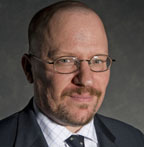A Staten Island judge ruled a lawsuit challenging New York State’s teacher-tenure and dismissal statutes may proceed.
On March 12, New York Supreme Court Judge Philip Minardo denied a motion by New York City’s Department of Education and the United Federation of Teachers (UFT) union to dismiss the lawsuit initiated by the Partnership for Educational Justice and the New York City Parents Union.
“This court . . . will not close the courthouse door to parents and children with viable constitutional claims,” Minardo wrote in his decision.
The case, which combines two lawsuits filed in 2014, alleges New York’s laws protecting teachers’ employment “have a negative impact on the quality of education in New York, thereby violating the students’ constitutional right to a sound basic education.”
The plaintiffs, including 11 New York City students, argue 97 percent of the city’s teachers obtain tenure and are therefore “virtually guaranteed lifetime employment, regardless of their in-class performance or effectiveness.”
They also contend the current teacher evaluation system, negotiated in 2005 by former Mayor Michael Bloomberg (I) and Joel Klein, the former city schools chancellor, is “non-uniform, superficial and deficient.”
UFT will appeal Minardo’s ruling, according to Michael Mulgrew, president of UFT.
Justice for Students
The New York lawsuit, modeled after the Vergara v. California suit, would weaken teacher tenure and job protections. The Vergara decision is currently under appeal.
“The judicial system is coming down on the side of children by rightly ignoring the tired, self-interested bleating of the teacher unions,” said Lance Izumi, senior director of education studies at the Pacific Research Institute in California. “Protecting bad teachers is bad for children, and the courts are beginning to understand that.
“It’s like the days when railroads and other special interests bought and controlled legislatures,” Izumi said. “The teacher unions have become Thomas Nast caricatures of monopoly power.
“The courage of these families to become plaintiffs is inspiring, and it looks like these modern-day Davids may end up slaying the union Goliaths,” Izumi said.
Replicating Quality Teachers
Izumi cited a 2011 study by researchers from Harvard and Columbia universities, which analyzed 20 years of student test results and found bad teachers hurt students’ higher education opportunities and lifetime earnings.
“No wonder the Harvard coauthor of the study said, ‘The message is to fire people sooner rather than later,'” Izumi said.
Some researchers are skeptical litigation will achieve the goal reformers seek.
Joshua Dunn, associate director of the Center for the Study of Government and the Individual at the University of Colorado-Colorado Springs, says the New York lawsuit may ultimately require a judge to say students have a constitutional right to a quality teacher.
“The problem with that is we don’t know where [quality teachers] come from,” Dunn said. “We’re getting better at identifying quality teachers, but we’re not very good yet at replicating them.”
Dunn says as a policy matter, legislators and policymakers may conclude the easiest solution to the teacher-quality problem would be to increase education spending.
“It’s difficult to measure how to make good teachers,” Dunn said. “Absent useful metrics, legislators will look for a proxy. That proxy will be money.”
Better Teaching Outcomes?
Daniel DiSalvo, a City College of New York political scientist and senior fellow with the Manhattan Institute for Policy Research, warns a judgment in favor of the New York City plaintiffs won’t necessarily lead to better teaching outcomes.
“You have to really pay attention to the fine print,” DiSalvo said.
DiSalvo says even as the 2005 New York City contract improved teacher evaluations and allowed principals to reject tenured teachers’ transfer requests, the rules still made no provision for firing substandard teachers.
As a result, DiSalvo estimates about 1,200 teachers have been added to New York City’s “absent teacher reserve” over the past decade, where they continue to collect a salary and benefits and cannot be let go.
“A saner system either would have longer and stronger evaluations at the front end, or would allow weaker evaluations but give principals more leeway when it comes to hiring and firing,” said DiSalvo.
Ben Boychuk ([email protected]) is an associate editor of the Manhattan Institute’s City Journal and an education policy advisor to The Heartland Institute.
Image by Ronny Richert.
Learn More:
Raj Chetty, John N. Friedman, and Jonah E. Rockoff, “The Long-term Impacts of Teachers: Teacher Value-Added and Student Outcomes in Adulthood,” December 2011:
https://heartland.org/policy-documents/long-term-impacts-teachers-teacher-value-added-and-student-outcomes-adulthood





